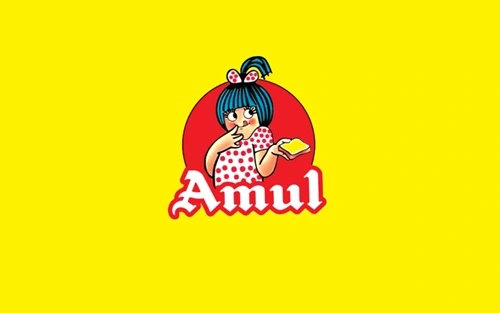Amul, the flagship brand of the Gujarat Co‑operative Milk Marketing Federation (GCMMF), is not only India’s largest dairy cooperative but also a global icon in cooperative and FMCG sectors. In fiscal 2024–25, Amul’s branded revenues surged to approximately ₹90,000 crore (~US $10.6 billion), a robust 12% growth from ₹80,000 crore the previous year. GCMMF alone recorded revenues of ₹65,911 crore (~US $7.75 billion), marking an 11% YoY increase. Behind these numbers lies a farmer‑centric cooperative with over 3.6 million members across 18,600 villages, procuring around 35 million litres of milk daily. As Amul celebrates its legacy and scales new heights, it faces a dynamic landscape filled with both opportunity and challenge.

Strengths
1. Market Leadership & Brand Trust: Amul continues to dominate India’s dairy industry, processing over 300 lakh litres of milk per day. Its brand, built over decades through iconic campaigns like the Amul girl, resonates deeply with generations. Amul was recently ranked the third most valued brand in India by YouGov.
2. Cooperative Structure & Farmer Empowerment: The cooperative model empowers 3.6 million producers, ensures stable supply chains, and fosters rural economic development. GCMMF’s federated structure—18 member unions across Gujarat—ensures grassroots connect and operational resilience.
3. Diversified Product Portfolio: Amul offers more than just milk—it spans butter, cheese, paneer, ice cream, sweets, chocolates, beverages, and bakery goods. This diversification reduces reliance on any one segment and taps into rising consumer preferences for value‑added and indulgent foods.
4. Extensive Distribution & Export Reach: With over a million retail touchpoints and 10,000+ distributors, Amul reaches the remotest parts of India. Internationally, it exports to around 50 countries and holds “Trading House” status for dairy exports.
5. Cost‑Effectiveness & Quality Assurance: Economies of scale in procurement and processing allow Amul to maintain competitive pricing without compromising quality. Additionally, GCMMF invests in animal health—feeding, artificial insemination—to ensure premium milk quality.
Weaknesses
1. Raw Material Price Volatility: Amul’s margins are sensitive to milk procurement costs, which fluctuate with feed prices, weather, and policies. While consumer prices remained stable—Amul cut milk rates by ₹1/litre in early 2025—the cooperative absorbed higher input costs.
2. High Operational Costs & Complex Structure: Its large‑scale operations and federated model entail high logistics and administrative overheads . The need for consensus among stakeholders can slow decision‑making and responsiveness.
3. Limited Penetration Beyond Dairy: While successful in dairy, some diversification efforts—like chocolates—have seen patchy performance. Extending brand equity into non‑dairy FMCG realms remains a work in progress.
4. International Brand Recognition Challenges: Despite exports to 50 countries, Amul lacks the consumer awareness that global dairy giants hold in many overseas markets.
5. Legal & Competitive Pressures: Past legal disputes—most notably with HUL over creative advertising—have occasionally impacted Amul’s public image.
Opportunities
1. Premium & Value‑Added Dairy: Rising urban incomes and health awareness offer growth in segments like probiotic yogurt, fortified dairy beverages, and artisanal cheeses .
2. Expansion via E‑commerce & Modern Retail: The e‑commerce boom opens direct‑to‑consumer channels. Modern trade partnerships can target pan‑India and urban markets more efficiently .
3. International Market Upside: Amul can capitalize on its export infrastructure to grow in the Middle East, Southeast Asia, and Africa. Positioning as a premium authentic Indian dairy brand could resonate with specialty consumers .
4. Sustainability Credentials: By spotlighting farmer welfare, ethical sourcing, and animal nutrition programs, Amul can strengthen sustainability claims—appealing to eco‑conscious markets .
5. Functional & Health‑Focused Extensions: Opportunities lie in protein‑rich beverages, low‑fat dairy variants, fortified milk, and lactose‑free goods—tapping growing wellness trends.
Threats
1. Intense Competitive Pressure: Competing with multinational players (Nestlé, Danone), local giants (HUL, Parag), and alternative proteins (plant‑based milks) is fierce .
2. Supply Chain Disruptions: Climate change, animal disease outbreaks, and feed shortages could impact milk procurement and costs.
3. Regulatory & Policy Risks: Changes in dairy tariffs, export regulations, or cooperative law structures could constrain operations.
4. Counterfeit & Private Label Brands: Local knock‑offs and private label dairy products can erode Amul’s market share in price‑sensitive rural areas .
5. Global Economic Slowdowns: Macroeconomic shocks and inflation could dampen consumer purchasing and strain export volumes.
Financial & Operational Overview
| Attribute | Value/FY25 |
| Branded Revenue | ₹90,000 crore (~US $10.6 bn) |
| GCMMF Revenue | ₹65,911 crore (~US $7.75 bn) |
| Milk Procurement | ~35 mln litres/day from 3.6 mln farmers |
| Export Markets | ~50 countries; “Trading House” status |
| Distribution Reach | 1 million+ retailers; 10,000+ distributors |
Future Outlook
Premiumisation & Portfolio Evolution: Amul is expected to accelerate innovation in clinical and heritage dairy—think probiotic yogurt, artisanal cheeses, and value-added milk packs—driving margin expansion.
Digital Transformation: Integration with e‑commerce platforms and the launch of Amul-branded D2C channels will bolster its presence in urban and rural households alike.
Global Expansion: By emphasizing quality, authenticity, and cooperative ethos, Amul could gain traction in niche segments of global dairy markets—particularly among diaspora and health-conscious buyers.
Agri-Tech & Farmer Support: Investments in AI-driven livestock health, precision feed, and real-time weather advisories can boost yields, reduce costs, and improve farmer income.
Sustainability as a Differentiator: Transparent sustainability reporting, carbon footprint reduction, and farmer welfare benchmarks can elevate Amul in both domestic and international markets, especially to younger consumers.
Competitive & Regulatory Readiness: Amul will need to monitor global trade policies, defend against counterfeits, and perhaps even enter plant‑based or lactose‑free segments to diversify and hedge risk.
With its deep-rooted cooperative model, unmatched distribution reach, and strong financial performance, Amul is positioned to lead India’s dairy future. Success will depend on how well it balances innovation, farmer empowerment, and stakeholder agility. The next 3–5 years will be pivotal—either cementing Amul’s legacy as a modern dairy powerhouse or exposing it to fresh market disruption.